Future state, future skills
Accelerating STEM skills for Western Australia
State STEM skills strategy: Mission update 2024–2029


State STEM skills strategy: Mission update 2024–2029

Science, technology, engineering and maths (STEM) skills lie at the heart of the Western Australian Government’s vision for a smart, diversified and decarbonised economy. I am excited about the rewarding opportunities for Western Australians to use their STEM qualifications and trades to work in our priority sectors, such as hydrogen, defence, space, agriculture and medical technologies.
With STEM jobs growing at twice the rate of other jobs, we need to make sure our industries have the workforce they need to grow and innovate, and everyone can access these opportunities, regardless of gender and background. We know interest in STEM starts from a young age, influenced by parents and diverse role models.
Western Australia’s outstanding STEM programs, attractions and communicators help build a culture of embracing science and technology in daily life.
This mission update strengthens our commitment for the next five years with a targeted, evidence-based approach to grow collaboration and impact across our STEM ecosystem.
Hon Stephen Dawson MLC Minister for Science

For more than 60,000 years, Western Australian Aboriginal peoples have exercised sophisticated knowledge of sciences to understand climate, practice medicine, and nurture productive landscapes.
Today, Western Australia is home to some of the world’s leading researchers and innovators in sectors such as agriculture, medicine, and resources, including stateof-the-art remote operations, automation and robotics.
Science is critical to our State’s future prosperity and well-being, as highlighted by the COVID-19 pandemic, and protecting our terrestrial and marine ecosystems. Technologies such as data analytics, artificial intelligence, quantum and new energies are profoundly changing our lives and workplaces.
We must continue to work together to increase the uptake and rigour of STEM education and training, so all Western Australians are equipped with the skills they need to ride the tsunami of change that’s coming.
Professor Peter Klinken AC Chief Scientist of Western Australia

The Western Australian Government is committed to all the children and young people of Western Australia achieving their full potential, regardless of background or where they live.
This mission update builds on the great work happening in our schools, where STEM education plays a crucial role in preparing the next generation for the challenges and opportunities ahead.
Studying STEM provides students with transferable skills, such as critical analysis, digital literacy and problem solving, enabling them to thrive in a future where technology and jobs are continually changing.
I thank our STEM educators for the important work they do to inspire and empower thousands of Western Australians. We need to support them with resources, professional learning and industry links that bring the curriculum to life, to build on our investment in science facilities and careers education across the State.
Hon Dr Tony Buti MLA Minister for Education

Western Australia’s future prosperity hinges on our ability to grow our skilled workforce in close alignment with industry needs. As we continue to invest in priority and emerging sectors such as automation and clean energy, it is essential our training and workforce development strategies consider cutting edge technologies and the changing nature of work.
The Western Australian Government has invested significantly in creating accessible career pathways post-school and for those reskilling and upskilling into high growth industries. I am delighted to see such a large uptake in STEM-based TAFE courses by Western Australians in recent years.
As well as embedding industry linkages, we are focusing on supporting traditionally under-represented groups in STEM and encouraging lifelong learning, so we can build a diverse and adaptable workforce ready to seize the opportunities of tomorrow and lead in the global STEM landscape.
Hon Simone McGurk MLA Minister for Training and Workforce Development

The Government of Western Australia acknowledges the Traditional Custodians throughout Western Australia and their continuing connection to the land, waters and community. We pay our respects to all members of the Aboriginal and Torres Strait Islander communities and their cultures, and to Elders past and present.

Cover image: New initiatives such as Career Taster and Career Practitioners Programs are enhancing STEM careers awareness in Western Australia.
CREDIT: Department of Education Western Australia

A globally competitive and innovative workforce with the skills to drive Western Australia’s technological future and create new job opportunities
Ensure students have STEM skills for the jobs of the future
Reskill and upskill the current workforce with the STEM skills required to embrace a technological future
Break down barriers to ensure everyone can participate in a STEM future
To grow and bolster a diverse and inclusive, industry-connected STEM education and skills talent pool in Western Australia
1. Career pathways and industry linkages
Showcasing priority and emerging STEM opportunities and fostering industry engagement to support education and training
Attracting and retaining under-represented groups in STEM, including women and girls, people from low socio-economic areas, people from regional and remote areas, and Aboriginal and Torres Strait Islander people
Engaging the community to build positive attitudes towards STEM, awareness of STEM and foundational STEM literacy skills

educators
As Western Australia aims to become a smarter, more sustainable, socially equitable, and economically diversified State by 2035, there is a need to bolster and strengthen our science, technology, engineering, and mathematics (STEM) skills and ensure all Western Australians can participate in emerging opportunities.
This mission update, Future State, future skills: Accelerating STEM skills for Western Australia, builds upon the first State STEM skills strategy, Future Jobs, Future Skills: Driving STEM skills in Western Australia, released in May 2019 by both the Minister for Science and the Minister for Education and Training.
The strategy set out a cross-sectoral approach to building a globally competitive and innovative workforce, with three goals focused on preparing students with STEM skills, reskilling and upskilling the current workforce, and breaking down barriers for under-represented groups.
This mission update retains the same vision and three goals and outlines a targeted approach for the next five years of the strategy, in view of current contexts and progress to date.
This update builds on the success of ongoing STEM skills initiatives at various government, industry and community levels and sets out priority action areas and crosscutting enablers for 2024 to 2029.
Below: SKA-Low Field Technician and Wajarri man Lockie Ronan gets ready to assemble some of the first SKA-Low antennas in Western Australia. CREDIT: SKA Organisation
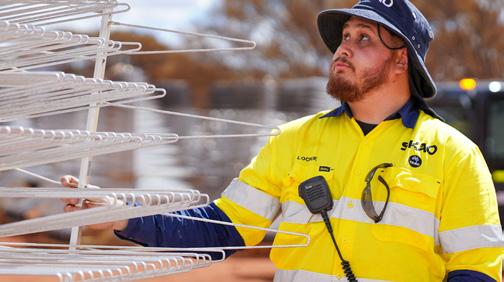
STEM is a term used to refer collectively to the disciplines of science, technology, engineering and mathematics. STEM skills can include:
» STEM discipline skills, including deep knowledge and practical techniques needed for a specific narrow or detailed field of STEM, such as soil science, civil engineering or chemistry.
» Higher order STEM skills or 21st century skills such as problem solving, critical thinking and entrepreneurship.
» STEM literacy skills, including the knowledge, skills and attributes to understand STEM concepts and make informed decisions on STEM matters.
» Digital skills, including the digital literacy skills everyone needs to use digital devices and programs in their daily lives; the skills needed within workplaces and businesses to adopt and implement digital technologies; as well as deeper digital technologies skills to design and create digital solutions to problems, such as computer science, data analytics or robotics.
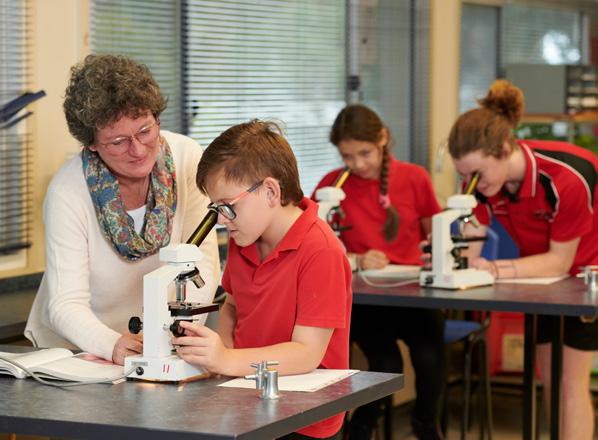
The world has experienced significant change since 2019 and the need for STEM skills has continued to grow.
In Australia, STEM jobs grew by 85% from 2010 to 2020 and continue to grow at more than twice the rate of other jobs. i STEM skills are in high demand in all industries, from engineering, technicians and trades servicing our housing, construction and resources sectors and clean energy transition, to pathology and diagnostic imaging services supporting our health care sector.
Global factors such as migration changes and COVID-19 have exacerbated current skills shortages across a range of industries
and accelerated the adoption of digital technologies. The pandemic accelerated the need for STEM skills, with 65,000 jobs created in Australia’s tech sector alone.ii
The growth of the health care and support workforce also requires STEM skills.
Fuelled by the fourth and fifth industrial revolutions, data and digital skills are among the fastest growing emerging skills in the past 20 years. The demand for STEM skills is growing in areas such as automation, artificial intelligence (AI), robotics, cybersecurity, biotechnology, digital health, and quantum technologies.

STEM skills are needed by all Western Australians, with new technologies transforming the tasks people need to compete at work and in their daily lives.
Research shows 1.5 million Western Australian workers will need some reskilling over coming years due to changes enabled by critical technologies such as AI, robotics and advanced data analytics.iii
Lifelong learning in STEM is vital for workforce resilience and adaptability, enabling workers to pivot careers to meet our rapidly changing economy.
STEM qualifications provide deep STEM knowledge, digital skills, and higher-order skills like problem-solving and analytical skills to support career flexibility and readiness for jobs that might not even exist yet.
Moreover, STEM-qualified workers earn more and drive economic growth and productivity through innovation. Shifting just 1% of Australia’s workforce into STEM roles is expected to add more than $57 billion to the Gross Domestic Product (net present value over 20 years).iv
Image below: Western Australia is hosting the first TAFE Clean Energy Skills National Centre of Excellence to support industries such as solar, wind, hydrogen and batteries.
CREDIT: Department of Training and Workforce Development
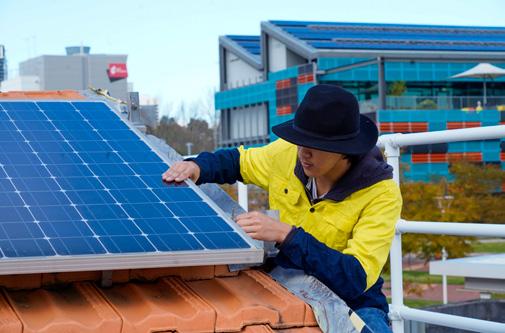
STEM skills underpin the success of the Western Australian Government’s diversification and decarbonisation of the local economy, and ultimately achieving a smarter and more sustainable State by 2035.
Western Australia’s priority industry sectors identified in the Diversify WA and Future State: Accelerating Diversify WA strategies all rely on access to a local STEM-skilled workforce, particularly so for energy, defence industries, mining and METS, space industries, health and medical life sciences, and primary industries. STEM skills also contribute to international education, tourism and events, and creative industries.
A skilled and productive workforce is an essential cross-sector enabler in Future State, allowing industry growth and attracting global investment and talent.
Each of these sectors has individual industry growth strategies and workforce planning underway. Migration and mutual recognition of skills also play an important role.
Science, innovation, and technology are also pivotal cross-sector enablers in Future State, and essential for diversifying the economy and developing priority sectors.
Western Australia must possess world-class STEM excellence to lead as both a creator and adopter of knowledge and new technologies to enhance industry competitiveness and create new industries. STEM skills are also crucial for advancing Western Australia’s manufacturing capabilities, accelerating the digital transformation of businesses and industries and preparing workers for technical change, and participating in domestic and global supply chains.
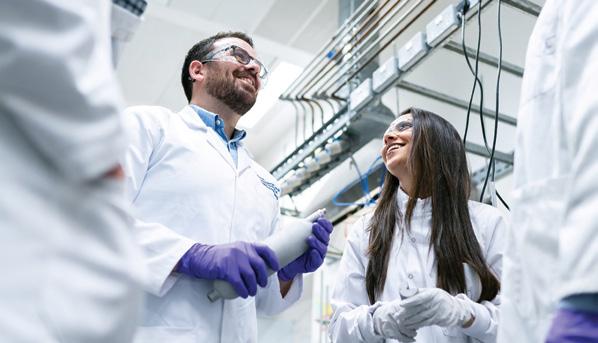
Figure 1: STEM skills support the industries and cross-sector activities outlined in Future State and Diversify WA, and access to these skills by all Western Australians supports social equity.
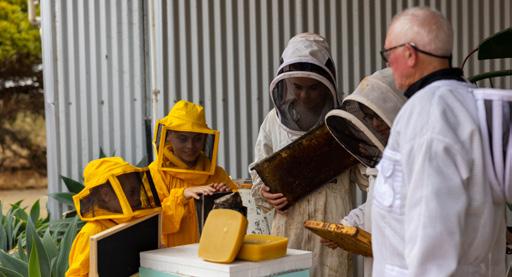
STEM skills are critical to primary industries, including
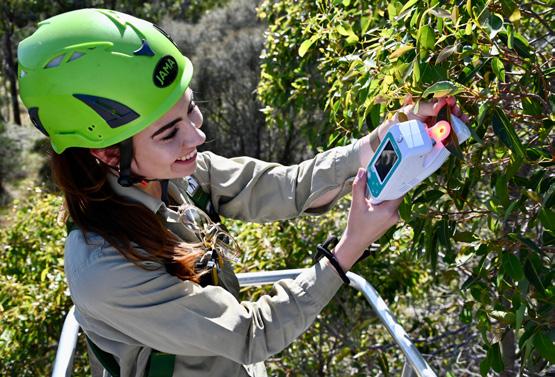
STEM skills are critical to preserving Western Australia’s unique biodiversity.
CREDIT: Department of Biodiversity, Conservation and Attractions, Kings Park Science
A diverse, and capable STEM workforce underpins Western Australia’s ability to contribute to solving local and global problems and progressing Environmental, Social and Governance (ESG) outcomes. These include the United Nations Sustainable Development Goals seeking to address challenges such as food security, biodiversity preservation, renewable energy, gender equality, and community health.
Workforce planning to support the reduction of sectoral emissions in Western Australia is underway. This is vital to transition to net zero greenhouse gas emissions by 2050 as per the Western Australian Climate Policy and will require a highly skilled workforce.
Transitioning heavy industry to net zero, for example, is projected to increase the engineering qualifications required by 20% by 2028, alongside strong demand for ICT and science technicians.v
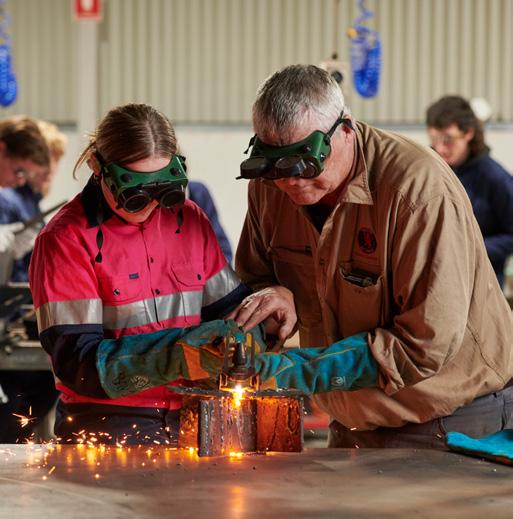
Since 2019, a range of new initiatives are enhancing STEM careers awareness in Western Australia, such as the Year 9 Career Taster Program and the 70 Career Practitioners in schools.
CREDIT: Department of Education Western Australia
Developing expertise in STEM disciplines will also support the Western Australian Government’s 10-Year Science and Technology Plan. The plan will provide a strong and unified vision for science and technology across Western Australia and support improvement in the State’s research capacity and capabilities.
Additionally, higher-order STEM skills like problem-solving and critical thinking, combined with entrepreneurial skills, support Western Australia’s vision to become a global hub of invention, investment, innovation, and impact, as outlined in the Western Australian Innovation Strategy.
Since the release of the 2019 State STEM skills strategy, 56 of 58 actions have been completed or considered finalised through ongoing activities. Several new Western Australian Government initiatives have also commenced, such as the Career Practitioners Program run by the Department of Education, and the Year 9
Strategy actions finalised 56 of 58 actions from the 2019 State STEM skills strategy completed or ongoing
56
56
To be incorporated into mission update action plan Completed or ongoing
To be incorporated into mission update action plan Completed or ongoing
Digital and Technology Skills Program
Supported initiatives for under-represented groups such as Women in Technology WA’s Techtrails and Spacecubed's She Codes
Digital and Technology Skills Program
Supported initiatives for under-represented groups such as Women in Technology WA’s Techtrails and Spacecubed's She Codes
70 events held 5,800 people engaged
70 events held 5,800 people engaged
Career Taster Program, run by the Department of Training and Workforce Development. This complements investment of more than $107 million into STEM facilities, classrooms and resources at Western Australian public schools since 2017.
STEM Enterprise Schools Program
Provided STEM professional learning and mentoring in low socio-economic public schools
STEM Enterprise Schools Program
Provided STEM professional learning and mentoring in low socio-economic public schools
completed by 136 schools 84%
completed by 136 schools reported increased teacher confidence and capability in STEM 84%
Take 2 STEM campaign over 1.1 million people reached
Take 2 STEM campaign over 1.1 million people reached
Many Western Australians have embraced a range of STEM education and training opportunities. Growth is notable in the vocational education and training (VET) sector where there has been substantial investment with free or reduced fee TAFE courses for STEM.
Supporting STEM engagement
Supporting STEM engagement Year 9 Career Taster Program
9 Career Taster Program Launched in 2021
Supporting STEM engagement Year 9 Career Taster Program
430,000 Embedding career development
Embedding
Launched in 2021
Launched in 2021
Allowing students to learn about different career pathways people engaged by Scitech in 2022-23
Allowing students to learn about different career pathways people engaged by Scitech in 2022-23
Allowing students to learn about different career pathways people engaged by Scitech in 2022-23
Embedding career development
70
70
70
placed in WA public secondary schools career practitioners
placed in WA public secondary schools career practitioners
placed in WA public secondary schools career practitioners
Fee-free TAFE qualifications
Fee-free TAFE qualifications
130 Qualifications
130 Qualifications
130 Qualifications
Fee-free TAFE qualifications and skill sets available in priority industry areas
Fee-free TAFE qualifications and skill sets available in priority industry areas
Fee-free TAFE qualifications and skill sets available in priority industry areas
What Western Australians think about STEM
What Western Australians think about STEM
Interest in STEM
What Western Australians think about STEM Neutral or disagreed Agreed
Neutral or disagreed Agreed
Neutral or disagreed Agreed
Just over 1 in 4 Western Australians (26%) across all adult groups are interested in pursuing a career in STEM, with 43% of 18-24 year olds interested Over 430,000
Neutral or disagreed Agreed Fee-free TAFE qualifications
Neutral or disagreed Agreed
Neutral or disagreed Agreed
Just over 1 in 4 Western Australians (26%) across all adult groups are interested in pursuing a career in STEM, with 43% of 18-24 year olds interested
Just over 1 in 4 Western Australians (26%) across all adult groups are interested in pursuing a career in STEM, with 43% of 18-24 year olds interested
Female representation in STEM pathways
Percentage of Year 12s studying at least two MAS, MAM, CHE or PHY that are female 37 0% in 2018
Percentage of Year 12s studying at least one STEM VET qualification that are female 2018 not available
See Reference viii for data inclusions and acronyms.
Female representation in STEM pathways
Course selection for Year 12 and university students has been impacted by a range of factors such as changes to student contributions to university courses and additional Commonwealth supported places, and the availability of alternative pathways to university.
(2023)
Percentage of Year 12s studying at least two MAS, MAM, CHE or PHY that are female 37.0% in 2018
STEM uptake would benefit from targeted support in some areas. For example, the percentage of Year 12 students in Western Australia studying at least one advanced mathematics, chemistry or physics course has decreased from 21.5% in 2018 to 18.2% in 2023.vi
Percentage of Year 12s studying at least one STEM VET qualification that are female 2018 not available
(2022)
Percentage of university enrolments in IT or engineering that are from females 15.6% in 2018
(2023)
Percentage of post-school VET STEM enrolments that are from females 21.9% in 2018
Female students remain underrepresented in some higher education STEM courses such as physics, information technology (IT), and engineering, as well as post-school VET STEM courses. This is compared to other higher education courses where gender is more equally represented such as agriculture, environmental and related studies.
(2022)
Percentage of university enrolments in IT or engineering that are from females 15.6% in 2018
Additionally, the data shows people from low socio-economic and regional areas and Aboriginal and Torres Strait Islander people remain under-represented in STEM and at risk of being excluded from STEM opportunities. International data shows a continuing divide between socioeconomically disadvantaged students, and, on average, Australia’s 15-year-olds’ knowledge and foundational skills in reading literacy, mathematics literacy and scientific literacy is decreasing over the long term.vii
(2023)
Percentage of post-school VET STEM enrolments that are from females 21.9% in 2018
Percentage of students studying at least two STEM courses or VET qualifications
Domestic university STEM enrolments
*2023 not yet available
Publicly funded VET STEM enrolments
Percentage of students studying at least one STEM course or VET qualification
2022 enrolment breakdown
2023 enrolment breakdown
Under-represented groups in Year 12
Percentage of students in the lowest ICSEA quartile studying at least one STEM course or VET qualification
low SES backgrounds 19.9% in 2018
low SES backgrounds 23.1% in 2018
Percentage of students identified as Indigenous studying at least one STEM course or VET qualification
identifying as Indigenous 1.3% in 2018 identifying as Indigenous 10.4% in 2018
Percentage of students living in very remote areas studying at least one STEM course or VET qualification
CaLD backgrounds 5.1% in 2018
CaLD backgrounds 9.5% in 2018 from regional areas 8.6% in 2018 from regional areas 43.3% in 2018
This 2024-2029 update incorporates areas identified for improvement, as well as remaining actions from the 2019 strategy, into three priority action areas and five cross-cutting enablers. It provides a targeted, evidence-based approach for the next five years. This update will be supported by more detailed action plans to ensure progress is achieved and measured.
The three priority action areas are:
1. Career pathways and industry linkages: Showcasing priority and emerging STEM opportunities and fostering industry engagement to support education and training.
2. Diversity and inclusion: Attracting and retaining under-represented groups in STEM, including women and girls, people from low socio-economic areas, people from regional and remote areas, and Aboriginal and Torres Strait Islander people.
3. STEM culture and literacy: Engaging the community to build positive attitudes towards STEM, awareness of STEM and foundational STEM literacy skills.
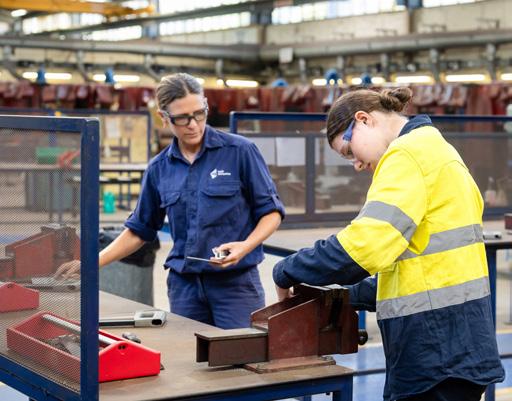
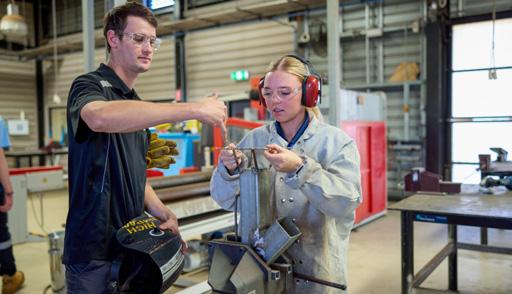
Our approach:
» Showcasing emerging STEM opportunities, including careers in industries that diversify and decarbonise the Western Australian economy.
» Fostering meaningful industry engagements with the community, schools (K-12), universities and VET providers to enhance and align course content, prepare workers for technological change, improve career awareness, and support educators and trainers.
A significant and collaborative effort is underway to develop a skilled workforce for priority industries and projects in the State, spanning across industry, government, vocational education and training (VET) providers and universities. This includes, for example, detailed workforce planning for
defence industries and Western Australia’s contribution to the AUKUS program, health and medical life sciences industries, advanced manufacturing, cybersecurity, the digital economy and for decarbonisation and the clean energy transition.
The integration of industry and STEM professional experiences into schools (K-12), VET and universities enhances the effectiveness of STEM courses and their relevance to current and future job demands.
Meaningful partnerships between education providers and industry provide opportunities for course codesign, real-world inquirybased learning and practicing discipline-specific skills, as well as digital skills, entrepreneurship, problem solving and critical thinking.
Additionally, this integration can make these industries more attractive to students, particularly when accompanied by flexible and supportive learning pathways, as well as internships, mentorships and role models.
In Western Australia, 35% of people surveyed reported a high awareness of the jobs available in the State’s STEM industries.ix While resource sector jobs are well known, many people are unaware, for example, of Western Australia’s worldleading submarine building capabilities, emerging space industry, or highly specialised research teams, for example working on ribonucleic acid (RNA) treatment for rare diseases or on the world’s largest radio telescope, the Square Kilometre Array.
Evidence shows the career intentions of young people are motivated by a range of factors, including personal interests, parents and teachers, skills and abilities, potential earnings, well-being, cultivation of
softer skills such as entrepreneurship, resilience and creativity, as well as having meaningful, secure employment and ambition to change the world and solve global problems such as climate change.x Research has shown that these aspirations are formed early in life, with most students having already decided away from STEM careers by the age of 12.xi
There are opportunities to showcase the applicability of STEM to a wide range of future jobs and the supportive career pathways available. This needs to start from a young age, embedded into school learning (K-12), and be supported by broader community engagement and local role models to break down stereotypes. Engagement needs to continue through VET and university, including opportunities for work experience and work-integrated learning, and beyond into the workforce, with flexible lifelong learning pathways to upskill, reskill and complete on-the-job training.
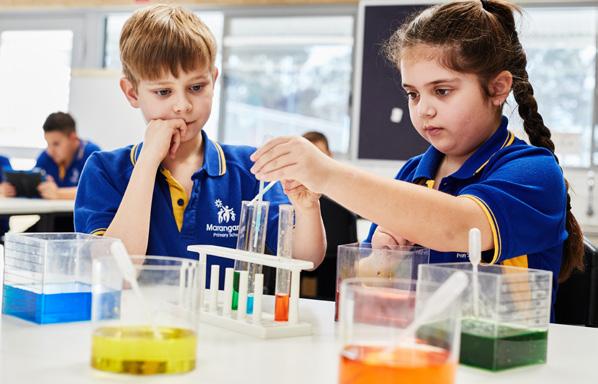
Our approach:
» Attracting under-represented groups into STEM through diverse role models, inspiring educators and effective outreach and access initiatives.
» Retaining and promoting underrepresented groups in STEM through supportive education pathways and workplaces, dismantling barriers and biases and providing support to ensure they thrive.
The largest potential growth area to fill the current and future STEM skills gap is attracting and retaining currently underrepresented or other historically disadvantaged groups of people including, but not limited to:
» women and girls
» people from regional and remote areas
» people from low socio-economic areas
» Aboriginal and Torres Strait Islander people
» culturally and linguistically diverse (CaLD) people
» people with disability
» LGBTQIA+ people
» neurodiverse people
» people facing age-based discrimination.
Expanding the diversity of the STEM talent pool is crucial for economic growth and social equity.
Availability of a diverse workforce, including developing and keeping specialist talent in Western Australia’s regions, underpins growth of priority sectors.
Diverse perspectives foster innovation, with better research and product outcomes.
A diverse workforce also ensures fair access to high-paying STEM careers and reduction of pay gaps. The likely displacement of low-skilled workers by technology and automation is an economic and social equity issue, particularly in regional areas. The transition to net zero is an example of where emerging technologies are presenting new job opportunities for reskilled workers.
Action is needed across all stages of STEM education and workforce planning, built on a partnership and co-design approach with under-represented groups to ensure inclusivity and participation in the evolving economy for all Western Australians.
Early exposure to STEM career options and representation of diverse groups are key to shaping career aspirations. We need to harness the influence of parents, educators, diverse role models, ambassadors and proven programs in order to help dismantle stereotypes and biases, and widen perceptions.
Once interest in STEM is established, social, financial and physical barriers must be addressed to ensure individuals thrive and achieve their full potential.
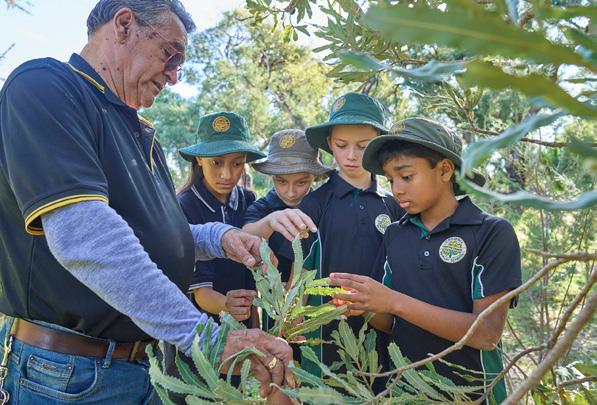
Flexible, accessible STEM pathways are crucial, supported by responsive teaching and recognition of prior learning, as well as resources recognising diverse backgrounds, locations and intersectional barriers and maximising cultural connections.
Options can also include mentoring, tutoring, online learning, learning in regional areas, work experience and twoway learning on Country.
Financial support such as scholarships and stipends can make STEM courses more attractive and counter some of the challenges encountered by some underrepresented groups. Some of these challenges include the costs or possible debt of education, access to transport and affordable accommodation, or the challenge with financial support during periods of mandatory university work placements in some courses.
To ensure retention, STEM education and workplaces must be safe, inclusive and free from bias, bullying, harassment, and discrimination. Workplaces should promote equity measures such as flexible working arrangements, career breaks, inclusive language, and parental and cultural leave entitlements.
Proactive support, including mentoring, networking and professional development opportunities, can nurture underrepresented groups in STEM throughout individual workers’ careers and entrance into leadership roles.
Rather than a linear pipeline, individuals are on their own unique lifelong journey through STEM engagement, education and employment, as depicted in the Australian Government’s Pathway to Diversity in STEM Review: Final Recommendations.xii The Western Australian Government will build on the findings of this review to support under-represented groups in STEM.
Our approach:
» Supporting community engagement initiatives to build interest, understanding, and positive attitudes towards science and technology and their critical importance to our future.
» Building STEM literacy and foundational skills to ensure Western Australians are equipped to thrive in the modern world and make informed decisions.
As Western Australia embarks on a journey to transform its economy, fostering a mindset of lifelong learning and curiosity in the State will be crucial. STEM literacy equips individuals with the essential knowledge, skills, and attributes to make informed decisions, actively participate in shaping the future and navigate an increasingly technological world. STEM foundational skills, such as numeracy and digital literacy, underpin daily life and the ability to succeed in modern workplaces, and are essential for all Western Australians.
Efforts to establish STEM as a cultural cornerstone, alongside sports and arts, promotes awareness of, and trust and pride in, Western Australia’s capabilities and achievements.
In turn, Western Australians can recognise the positive impact of scientific and technological advancements on society and become advocates promoting Western Australia as a smart, sustainable State, as well as recognise and value traditional Aboriginal and Torres Strait Islander people’s culture and scientific knowledge.
Research shows 32% of Western Australians can name a local scientist, engineer, scientific discovery, or invention, and awareness of local emerging STEM industries is low.ix Greater community awareness of the availability and importance of STEM capabilities and career opportunities in Western Australia means individuals are more likely to encourage those around them to take up STEM studies, careers, upskilling and lifelong learning opportunities.

Exhibitions like ‘To the Moon’ at the WA Museum Boola Bardip inspire the community with insights into space, science, and the cultural impact of the moon. CREDIT: Jess Wyld.
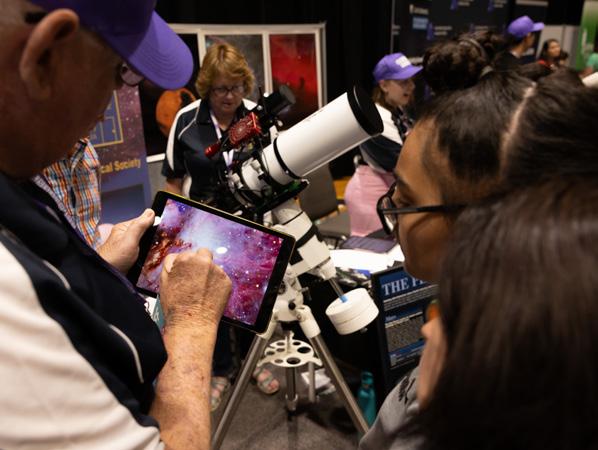
Promisingly, the same research shows that more than 80% of Western Australians have participated in an activity over the past 12 months involving STEM engagement, for example consuming STEM-related media, visiting a museum or zoo, or taking part in citizen science or star-gazing.
This participation increases for parents and caregivers, who play an important role in influencing young people’s aspirations for STEM.
STEM engagement activities in and alongside schools, such as competitions, clubs, incursions, excursions and special events, complement formal education and training and help build a STEM culture throughout communities.
Recreation and tourism are important avenues to continue to build STEM culture and elevate Western Australia’s Aboriginal and Torres Strait Islander scientists and Indigenous knowledge.
The popularity of museums, science centres, and botanical gardens, coupled with dedicated events and festivals, highlights the appeal of curiosity-driven STEM-related experiences for all people of all ages and backgrounds in Western Australia. There is an opportunity to use this interest to garner support and preparedness within the community for addressing the social, environmental and economic challenges ahead.
This 2024-2029 update is underpinned by five cross-cutting enablers:
1. Support and facilities for educators
2. Coordination and collaboration
3. Alignment and leverage 4. Communication and advocacy 5. Evaluation and measurement
Our approach:
» Encouraging access to effective STEM resources, professional learning, micro-credentials, and industry engagement for educators.
Western Australia’s STEM teachers, lecturers and trainers, throughout schools (K-12), universities and registered training organisations, are key to delivering worldleading and industry-relevant STEM education and training and to unlocking every student’s potential.
Amid a nation-wide teacher shortage, it is crucial to provide existing teachers and support staff with access to STEM resources and professional learning to continually enhance their skills and stay updated on industry trends and best practice. This allows them to deliver inquiry-based, differential learning experiences to increase student outcomes and career aspirations and build STEM culture and entrepreneurship skills within their schools.
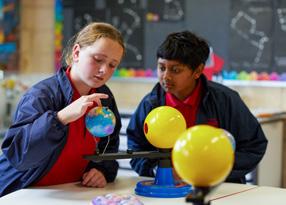
STEM professional learning plays an important role in quality teaching for impact, including in regional areas. CREDIT: Department of Education Western Australia
Support is also needed for educators to maximise available support mechanisms, including new school laboratories and STEM facilities throughout the State, and cutting-edge training facilities at universities, TAFEs, and within industry. Technology and AI are also playing a growing role in breaking down access barriers for regional and remote students and teachers.
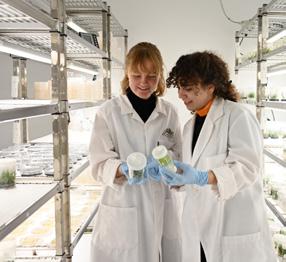
Collaboration and coordination across education providers and industry is essential for research STEM capability. CREDIT: Kings Park Science
Our approach:
» Facilitating coordination and collaboration across the STEM ecosystem to maximise collective outcomes.
Western Australia’s STEM skills ecosystem is complex and it is critical all components are coordinated and working well together in order to amplify coverage and impact. There are opportunities to enhance crosssectoral collaboration and partnerships across schools (K-12), universities, VET providers, industry, workforce, government, community and informal STEM engagement providers across local, state, national, and international levels. Efforts are required to connect and bring together collective expertise and resources to enrich STEM education and engagement experiences and build STEM career pathways to meet future industry needs. There are also opportunities to enhance visibility, linkages and effective information sharing so other governments, industry, workplaces, education providers, students, parents and the general public are able to connect into and navigate within the STEM ecosystem.
Our approach:
» Maximising industry, community and government opportunities to align with and leverage relevant international, national, state and local activities.
Many of the challenges addressed by this State strategy are also being experienced at local, national and international levels across industry, community, and government sectors. There is a clear opportunity to align efforts to leverage and partner with existing initiatives underway, including those that are Commonwealth or industry led, wherever possible for the benefit of Western Australians and to showcase the State’s leadership.
For example, the Australian Government is actively building STEM capabilities to support the national interest, and has a number of funding streams, strategies, agreements, and reviews underway to address STEM diversity, industry, research, critical technologies, defence, migration and educational outcomes. This 2024-2029 update supports, complements and leverages such activities to maximise economic, social and environmental outcomes for the State.

Ecologist Dr Bruce Webber, CSIRO, and teacher Hannah Reid, Churchlands Primary School, participating in CSIRO’s STEM Professionals in Schools program. CREDIT: CSIRO
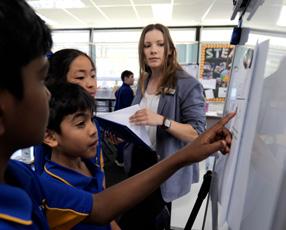
Scitech’s Lighthouse Maths (partnered with Chevron) supports teachers to foster students’ maths skills and confidence using the Powerful Problem-Solving approach. CREDIT: Scitech
Our approach:
» Promoting clear and collective messaging to promote STEM and advance our shared vision and priority action areas.
This 2024-2029 update provides a renewed opportunity to promote a shared vision and direction throughout Western Australia’s STEM ecosystem. Clear and collective messaging underpins collective achievement across the priority action areas to raise awareness of STEM careers and pathways, advocate for underrepresented groups in STEM, and grow STEM culture throughout the State.
A common narrative and inclusive language will ensure STEM is seen as being for everyone. It will promote the relevance and importance of science and technology in everyday life, rewarding careers and Western Australia’s future. The evergrowing wealth of knowledge and evidence base offers an opportunity to ensure effective language is used when engaging with community or targeted audiences on STEM-related content.
Our approach:
» Facilitating effective evaluation and measurement of outcomes to enhance effectiveness, inform best practice and identify proven initiatives to scale up.
Evaluation and measurement are important cross-cutting enablers to be embedded into the implementation of this 2024-2029 update. The intended impacts of individual STEM initiatives can often be long-term and difficult to measure or attribute. A person’s participation in STEM is influenced by a wide variety of factors throughout their life.
Appropriate whole-of-state indicators for STEM will be tracked in Western Australia, to measure and build on progress to date. This will support identification of overall trends, skills gaps and participation gaps to inform priorities and decision-making, and provide benchmarks for individual STEM initiatives.
Concurrently, individual STEM initiatives are encouraged to use and share best practice, to ensure outcomes are maximised and captured through program logic and data collection. This informs continuous improvement, as well as evidence-based decision making by government and industry on which successful initiatives should be supported and scaled up.
i National Skills Commission 2021, State of Australia’s Skills 2021: now and into the future, Australian Government, Canberra.
ii Accenture 2021, The economic contribution of Australia’s tech sector, Tech Council of Australia, Australia.
iii Deloitte Access Economics 2023, Australia’s Digital Pulse – A new approach to building technology skills, Western Australia edition, Australian Computer Society, Canberra.
iv PricewaterhouseCoopers 2015, A smart move, PricewaterhouseCoopers, Australia.
v Bankwest Curtin Economics Centre 2023, Modelling changes in heavy industry workforce and skills in WA: Towards a transition to net zero carbon emissions by 2050, produced for the Department of Jobs, Tourism, Science and Innovation, Perth.
vi Data extracted from the School Curriculum and Standards Authority’s database and includes Year 12 students completed at least one of Mathematics Specialist (MAS), Mathematics Methods (MAM), Chemistry (CHE) or Physics (PHY) courses.
vii OECD 2023, PISA 2022 Results (Volume I): The State of Learning and Equity in Education, PISA, OECD Publishing, Paris.
viii Data in the infographic was collated from the following sources: The 58 actions referred to in the infographic are listed in the 2019 State STEM skills strategy. The two unfinalised actions relate to industry schools-linkages and STEM teacher qualifications, to be addressed in the Mission Update via the ‘Career pathways and industry linkages’ priority action area and the ‘Support and facilities for educators’ enabler.
Community attitudes data was sourced from Verian Market Research Perth 2024, Perceptions and attitudes toward STEM in Western Australia 2023 – Report commissioned by the Department of Jobs, Tourism, Science and Innovation, Perth. Year 12 student data was extracted from the School Curriculum and Standards Authority’s database and includes WA Certificate of Education courses defined as List B that are also under the learning areas of Science, Mathematics Technology and Enterprise, and VET qualifications allocated to the Field of Education 01, 02, 03, and 05 for the following:
» Studying at least two STEM courses or VET qualifications
» Studying at least one STEM course or VET qualification
» Total of Year 12 students
» Students living in very remote areas
» Students identified as Indigenous
» Students in the lowest index of community socio-educational advantage (ICSEA) quartile
Due to the availability of data, 06, excluding the 4-digit fields 0619 and 0699, was not included.
For the percentage of Year 12s studying at least one STEM VET that are female, Year 12 student data was extracted from the School Curriculum and Standards Authority’s database and includes VET qualifications allocated to the Field of Education 01, 02, 03, 05 or 06 excluding the 4-digit fields 0619 and 0699. Due to the availability of data, only 2023 was presented, not 2018.
Female representation in STEM pathways includes the following acronyms related to Year 12 STEM courses:
» MAM: Mathematics Methods
» MAS: Mathematics Specialist
» CHE: Chemistry
» PHY: Physics
University data was provided by Australian Department of Education and includes domestic undergraduate and postgraduate student enrolments (Bachelor to PhD level) enrolled at WA universities in a field of education 01, 02, 03, 05 or 06 excluding the 4-digit fields 0619 and 0699. Data is presented for years 2018 to 2022, as 2023 will not be available until later in 2024.
VET data was provided by Department of Training and Workforce Development VET enrolment collection and includes publicly funded course enrolments for TAFE colleges and funded private providers across the fields of education 01, 02, 03, 05, or 06 excluding the 4-digit fields 0619 and 0699. Data is presented for years 2018 to 2023.
ix Verian Market Research Perth 2024, Perceptions and attitudes toward STEM in Western Australia 2023 – Report commissioned by the Department of Jobs, Tourism, Science and Innovation, Perth (unpublished)..
x YouthInsight 2021, 2021 Youth in STEM Report, Prepared by YouthInsight for the Department of Industry, Science, Energy and Resources; and YouthInsight 2022, Youth in STEM WA Results, Report produced for the Department of Jobs, Tourism, Science and Innovation July 2022, Data taken from DISER Youth in STEM 2021 Survey.
xi Kings College London 2013, ASPIRES Young people’s science and career aspirations age 10-14, London.
xii DISR (Department of Industry, Science and Resources) (2024) Pathway to Diversity in STEM Review Final Recommendations, DISR, Australian Government.
Department of Jobs, Tourism, Science and Innovation
Level 11, 1 William Street Perth, Western Australia
Tel: +61 8 6277 3000 jtsi@jtsi.wa.gov.au www.wa.gov.au/jtsi Key resources
Western Australia’s STEM skills strategy
Future jobs, future skills –driving STEM skills in Western Australia
Western Australia’s economic development framework
Future State: Accelerating Diversify WA
This document is available in alternative formats on request for persons with accessibility requirements, please contact the Department of Jobs, Tourism, Science and Innovation. Disclaimer